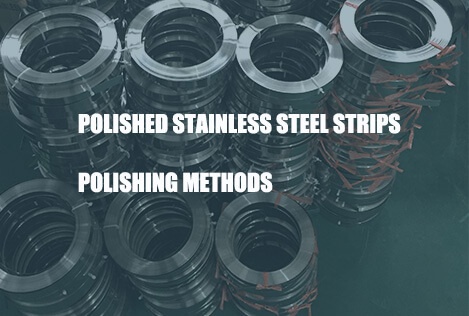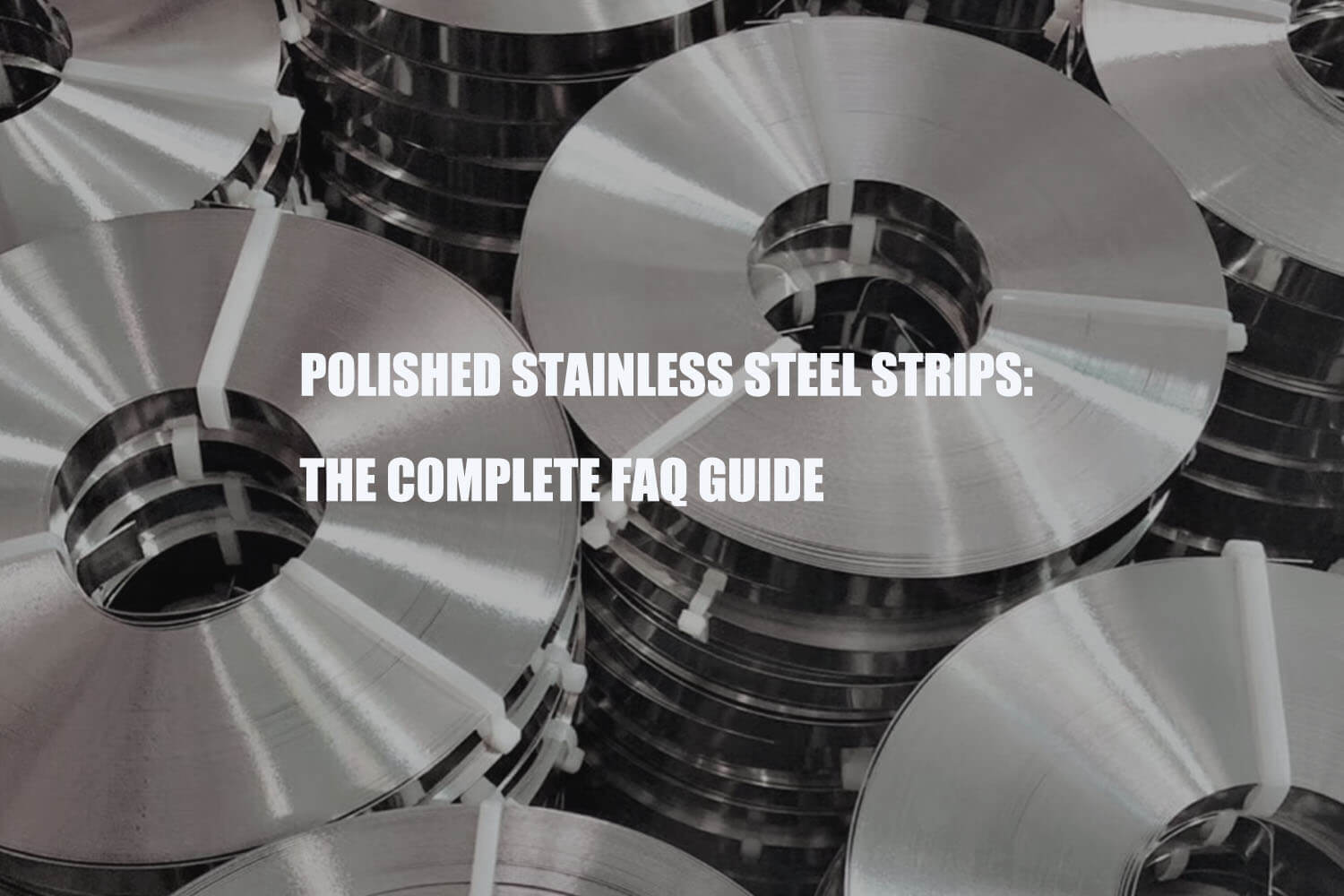What Are The Polished Stainless Steel Strips?
Polished stainless steel strips are the strips with polishing bright surface finish produced by different polishing equipment and method.
As we know, stainless steel strips will form a black or gray oxide scale on its surface finishes after thermal processing, mechanical processing or placing it for a certain period of time.
Its main components are Cr2O3, NiO and very insoluble FeO and Cr2O3,
These components affects the appearance quality. What’s more, they also affect the performance of the steel strip product.
As a mature surface treatment method, stainless steel polishing has been widely used.
Polishing can further improve the corrosion resistance and bright effect of stainless steel strips.
Polished stainless steel strips are divided into main five types according to their organizational characteristics: austenite, austenite-ferrite, ferrite, martensite and precipitation hardening, which can be selected in real application.
What Are The Difference Between Polished Stainless Steel Strips And Brushed Stainless Steel Strips?
The polished stainless steel strips have a bright appearance, which is easy to clean. There is an invisible protective film to prevent corrosion of the surface of the steel strip material.
However, there is a problem to pay attention to the bright stainless steel is that the surface is easy to scratch, and it will leave scratches if it is rubbed by sharp objects, which greatly affects the beauty of steel strips.
So we can not worry about this problem which occurs on the brushed stainless steel strip.
The advantage of brushed steel strip with matt surface is that it has an atmospheric appearance and has less light pollution.
The disadvantage is that because the surface of the steel strip lacks a protective film, the rust resistance is reduced. So it is only suitable for some environments with weak corrosion to the strip steel.
What Are The Polished Stainless Steel Strips Polishing Methods?

Polished stainless steel strips have total six polishing methods to achieve polishing bright finish.
Different process and tools are used for these polishing methods.
Below let us HZW team to introduce all details of these methods here.
Let us keep reading.
Mechanical Polishing
Mechanical polishing type is a polishing method that relies on cutting and plastic deformation of the material surface to remove the polished convexities to obtain a smooth surface of polished stainless steel strip.
Generally, oil stone sticks, wool wheels and sandpaper are chose with manual operations.
Some special parts such as rotating bodies and spinning parts, auxiliary tools such as turntables can be used.
The ultra-precision polishing methods can be used for high surface finish quality requirements.
Ultra-precision polishing is the use of special abrasive tools, which are pressed against the processed surface of the workpiece in a polishing liquid containing abrasives for high-speed rotation. The surface roughness of Ra0.008μm can be achieved by this advanced technology, which is the highest among various polishing methods.
Chemical Polishing
Chemical polishing is to make the surface microscopic convex part of the stainless steel strip material in the chemical medium dissolve preferentially than the concave part, thereby obtaining a smooth surface.
The main advantage of this method is that it does not require complicated equipment and line, which can polish workpieces with complex shapes. It can help polish many workpieces at the same time with high efficiency.
The core problem of chemical polishing is the preparation of polishing liquid. The surface roughness obtained by chemical polishing is generally several 10 μm.
Electrolytic Polishing
The basic principle of electrolytic polishing is the same as that of second chemical polishing.
To make the surface be smooth by selectively dissolving tiny protrusions on the surface of the stainless steel strip material. Compared with chemical polishing, the effect of cathode reaction can be eliminated, and the polishing effect is better.
The electrochemical polishing process is divided into two steps:
- Macroscopic leveling The dissolved product diffuses into the electrolyte, and the geometric roughness of the stainless steel strip material surface decreases, Ra> 1μm.
- Low-light leveling: Anode polarization, surface brightness of stainless steel strip is improved, Ra<1μm.
Ultrasonic Polishing
We can join the stainless steel strip and the abrasive suspension together, then put them in the ultrasonic field together.
Relying on the vibration of the ultrasonic to make the abrasive grind and polish on the surface of the steel strips.
Ultrasonic machining has a small macroscopic force and will not cause deformation of the strip material.
But it is difficult to manufacture and install tooling.
Ultrasonic processing can be combined with chemical or electrochemical polishing methods.
On the basis of solution corrosion and electrolysis, ultrasonic vibration is applied to stir the solution, so that the dissolved product on the surface of the stainless strip is separated, and the corrosion or electrolyte near the surface is uniform.
The cavitation effect of ultrasonic in the liquid can also inhibit the corrosion process and facilitate surface brightening.
Fluid Polishing
Fluid polishing relies on high-speed flowing liquid and the abrasive particles carried by it to wash the surface of the stainless steel strip to achieve the purpose of polishing.
Commonly used methods are: abrasive jet processing, liquid jet processing, hydrodynamic grinding and so on.
Hydrodynamic grinding is driven by hydraulic pressure to make the liquid medium carrying abrasive particles flow back and forth across the surface of the stainless steel strip at high speed.
The medium is mainly made of special compounds (polymer-like substances) with good flowability under lower pressure and mixed with abrasives.
The abrasives can be made of silicon carbide powder.
Magnetic Abrasive Polishing
Magnetic abrasive polishing is to use magnetic abrasives to form abrasive brushes under the action of a magnetic field to grind the stainless steel strip coil.
This method has high processing efficiency, good quality, easy control of processing conditions and good working conditions.
Using suitable abrasives, the surface roughness of polished stainless steel strips can reach Ra0.1μm.
How To Choose Polished Stainless Steel Strips Manufacturers?
HZW is one of the professional stainless steel strips manufacturers in global market.
In the past decades, the Made in China products are the low quality nouns. Until now, some buyers also worry about the quality of China goods. Here in HZW, quality is our factory and company soul. Our expert team is well versed in several industry fields, making sure there is no error in your every strip stainless steel order.
From precision 301 stainless steel strip slitting process to super austenitic 904L stainless steel strip for heat exchangers, here you can find all solutions.
If you are looking for the quality polished stainless steel strips suppliers from China, why not contact us here?












